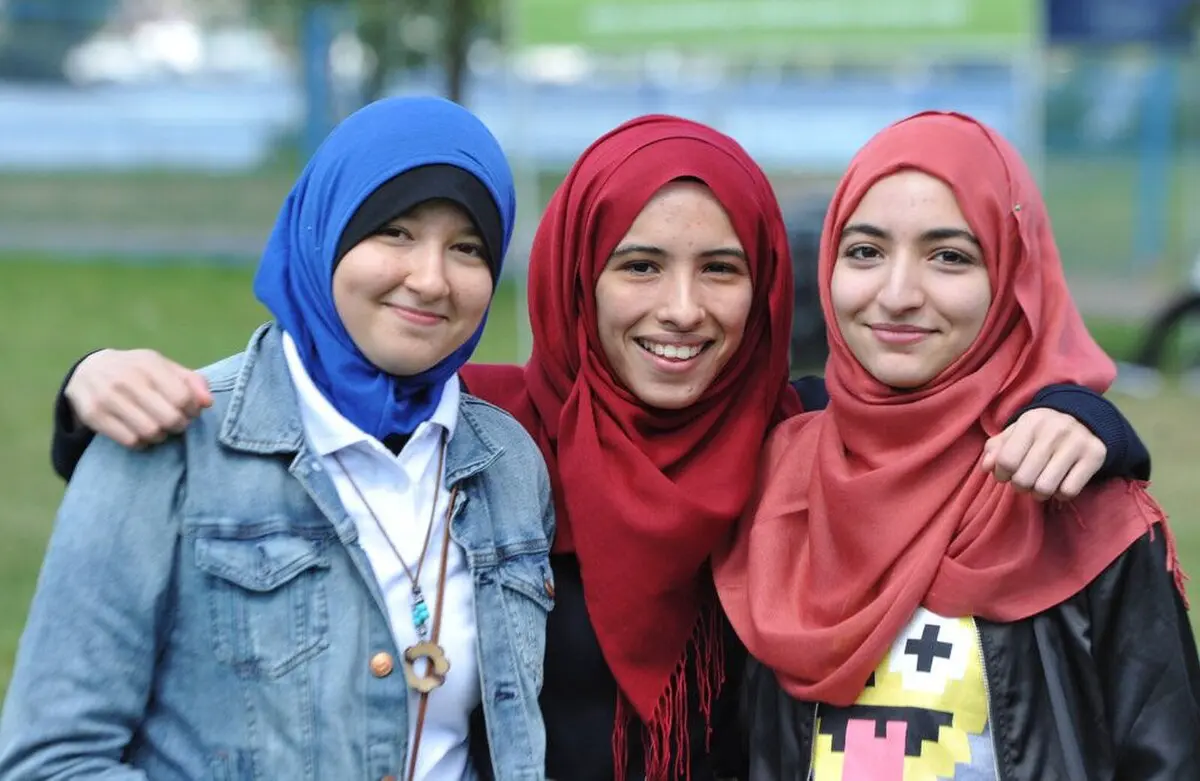Imagine this: you’re at a citizenship ceremony, a moment meant to symbolize the unity and diversity of a nation. Among the attendees is a woman wearing a veil—perhaps it’s a niqāb, a hijab, or a headscarf. The crowd reacts: some with curiosity, others with skepticism. But why should a veil, which has been worn for centuries across various faith traditions, stir so much controversy in modern civic spaces? Isn’t the very point of these ceremonies to celebrate individual freedom and cultural diversity?
Veiling practices, common across many faiths, have long served as symbols of modesty, devotion, and religious expression. Muslim women wear veils like the hijab, niqāb, or chador, while Orthodox Jewish women cover their hair with scarves or wigs, and Christian nuns don veils as part of their religious norms. Sikh men and women often wear turbans as expressions of faith, and Hindu women may wear ‘ghoonghats’ during religious ceremonies. Even within Buddhism and Zoroastrianism, head coverings hold spiritual significance.
Interestingly, royal family women, such as those from the British monarchy, are also mindful of veiling when entering religious spaces. For instance, they often wear head coverings when attending church services or visiting religious sites as a mark of respect, while they dress differently outside of those spaces, mindful of the context.
These practices transcend individual faiths and roles, serving as visible manifestations of deeply held beliefs. The issue, then, isn’t just about one type of veil but about recognizing the right of all individuals to express their identities freely in civic spaces.
The Case of Layla Soliz: A Modern Fight for Religious Freedom
A recent case involving Layla Soliz, a Muslim woman from Knoxville, Tennessee, highlights this ongoing struggle over religious freedom. Soliz was arrested during a pro-Palestinian protest and forced to remove her hijab for a booking photo, despite promises that it would remain private. Her photo was later uploaded to the sheriff’s website, leading her to file a federal lawsuit. “This hijab is part of my identity. Having to not only remove it, but then knowing that my photo was shared for everyone to see, only added to the humiliation I felt,” she stated. The lawsuit, filed under civil rights violations, argues that this act infringed upon her religious freedom, and it brings into focus broader issues of civil rights, criminal justice & policing, and legal accountability. Soliz, represented by civil rights attorney Daniel Horwitz, is seeking $250,000 in damages from the Knox County Sheriff’s Office and demanding changes to their booking procedures.
The case, first reported by Angela Dennis on October 15, 2024, exemplifies the ongoing debate about religious freedom and the right of Muslim women to maintain their head coverings in public and civic spaces, reinforcing the argument that such freedoms must be protected under both constitutional and human rights laws.
Secularism or Control?

Countries like France and Belgium have passed laws banning the niqāb and other full-face veils in public spaces under the guise of “secularism.” However, the problem with these laws is that they don’t just promote secularism—they control personal religious expression. Is it really about maintaining public safety, or is it about ensuring cultural conformity that aligns with Western ideals?
If we’re being honest, face coverings are permitted for all sorts of reasons in public spaces—whether for skiing, COVID masks, or even Halloween costumes. So why is the niqāb singled out? And, more importantly, what does it say about our values when we allow one form of face covering but outlaw another based solely on religious or cultural affiliation?
The Feminist Dilemma: Empowerment or Hypocrisy?
Let’s talk about feminism. We love to champion women’s rights to wear whatever they want—until they choose something we don’t like. The irony is thick: we fight for a woman’s right to wear bikinis on the beach, but recoil when she chooses to cover her face as part of her religious belief. Feminism is about giving women the agency to make their own choices, not about imposing a new dress code. So, the real question here is: who gets to decide what empowerment looks like?
Isn’t telling a woman she can’t wear a niqāb just as oppressive as forcing her to wear one? If one woman feels empowered by a pantsuit and another by a veil, both should have the right to express themselves in public spaces. At the heart of this debate is the question of whether we truly respect women’s autonomy, or whether we only respect it when it aligns with our personal beliefs.
Can a Democracy Survive Uniformity?
Here’s where things get serious: if we start banning religious expressions like veils at civic ceremonies, we set a dangerous precedent. What happens next? Do we start banning other religious symbols like the kippah, the cross, or the turban? When we demand that people shed their religious and cultural identities to participate in civic life, we aren’t promoting inclusion—we’re promoting erasure. And here’s the chilling question: can a democracy survive when it starts prioritizing uniformity over diversity?
The whole point of a civic ceremony is to bring together people from different walks of life, bound by the shared values of freedom and democracy. When we start limiting those freedoms in the name of “neutrality” or “secularism,” we risk undermining the very foundations of a pluralistic society. How inclusive is a democracy that demands its citizens look and act the same in order to be seen as legitimate participants?
Who Are We Really Protecting?
At the end of the day, the question isn’t whether a woman should be allowed to wear a veil to a civic ceremony—it’s why we’re so afraid of it in the first place. Are we protecting the principles of democracy, or are we just trying to protect our comfort zones? A veil—whether it’s a niqāb, hijab, turban, or sari—doesn’t undermine civic unity. It enriches it. Civic ceremonies are meant to celebrate diversity, not stifle it.
So, should veil coverings be allowed at civic ceremonies? Absolutely. Because if we start telling women what they can and cannot wear in public spaces, we’re not just policing clothing—we’re policing freedom. And in a democracy, that’s the last thing we should be doing.









